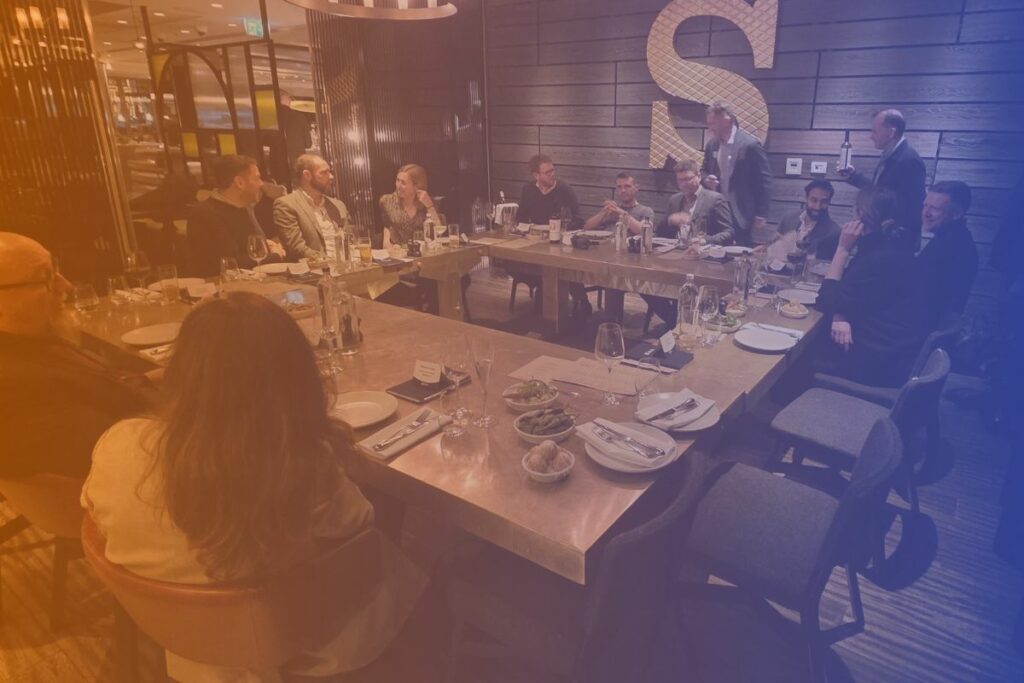The breakfast event coming up on March 13 looks great!
We attend so many conferences and while personalisation is always a topic, few brand marketers get up on stage and reveal the secrets to their success. They often speak in broad strokes without giving the specific details regarding what was implemented, what they tested that worked (or failed), and where they are going next. We’re excited to be able to share true success stories with specific details on which brands are doing what right now.
How does Sailthru’s Retail Personalization Index work?
We wanted to give retailers a resource to see how their customer experience compares to known leaders in retail and ecommerce across a variety of categories, including fashion retail, health and beauty, luxury, accessories, sporting goods, and more.
We developed a proprietary methodology for scoring any brand, which includes evaluating more than 50 aspects of the customer experience such as if personalisation is used in onboarding, how and where product recommendations are integrated, and how personalisation is used in terms of channel selection and messaging cadence.
To determine how valuable any individual attribute is for retail brands, we surveyed 13,000 consumers to determine how a specific aspect of the customer experience impacted their satisfaction with a brand and their likelihood to purchase again (among other factors).
Brands can score up to 100 points. The top brand, Sephora, received 79 points. Any brand not included in the top 100 can find out how they would have scored by taking the online assessment.
Why is personalisation a key to success for retailers?
Gartner has predicted that organisations fully invested in personalisation by 2018 will outsell their competitors by more than 30 per cent. According to Forrester, 77 per cent of consumers have chosen, recommended, or paid more for a brand that provides a personalised service or experience. And in our own experience, personalisation has increased channel revenue for mid-market and enterprise retailers by up to 40 per cent and has aided in decreasing customer churn by more than 30 per cent.
The simple truth is that human connections matter. Connections matter for consumers in the long-term, even though price and other factors may shift short-term buying decisions and with loyal, retained customers often driving the bulk of revenue for retail brands, treating these customers as individuals is critical.
Can you name one retailer doing personalisation right, and how they’re doing it?
While Sephora received the top score in the Retail Personalization Index, JustFab, a part of the TechStyle Fashion Group retail enterprise would have taken top marks if it had a mobile app. In email, for example, JustFab dynamically orders product categories to appear based on an individual’s preference for specific categories.
This is set through real-time analysis of behavioural and purchase data. The brand also personalises the send time of email newsletters, so that a customer who is an early riser (and early shopper) gets her emails at, say 7am, if that’s when she most often opens email from JustFab versus a late-night browser who might get her email at 9pm.
JustFab uses dynamic product recommendations, advanced lifecycle management techniques, and more across email and web. Their team has been implementing, testing, and advancing their approach over multiple years and has been growing at a CAGR of 124 per cent since 2010 because of this!
Why will the index Retail Personalization Index be a great tool for retailers?
By understanding how they score they can start to develop comps for similar scoring retailers within specific channels and aspirational comps based on the retailers who are more advanced.
The goal is to set a roadmap for advancement and to shift thinking of personalisation as a one-time implementation to an ongoing strategy that needs to be developed and honed over time.
Tell me the story about Sailthru.
Sailthru was founded on the notion that every consumer is unique. The visionary behind Sailthru grew up seeing his father, who was a greengrocer, get to know all of his customers so that he could offer the best experience. He had all of this data in his head and when large supermarkets came to town, his business stayed strong because – even though it was less convenient to visit two stores – his customers were extraordinarily loyal. Our founder sought to bring scale to this idea and Sailthru was born to help global organisations build true human connections in a digital world.
How is Sailthru different to other retail personalisation firms?
With so many technologies promoting personalisation capabilities, it’s often very challenging for marketers to know what is real. Sailthru was the first technology to personalise email messaging, using data from email, web, mobile, social, and offline sources and now we bring that same richness of data to connect the customer experience for individuals across email, web, and mobile.
We do this by being a one-stop shop for campaign management, marketing automation, and personalisation. You simply cannot achieve a seamless, real-time, personalised experience across your digital channels using a mix of point solutions for every channel and purpose and this is what Sailthru does best and what differentiates us most.
How is Sailthru addressing some of the challenges facing the high street?
We’re in the midst of the so-called retail apocalypse – sales continue to slump, especially in traditional bricks-and-mortar businesses, which the high street is known for. We find that most high street retailers understand the challenges they are facing in broad strokes, but what we know to be true is that you cannot solve legacy challenges with a legacy approach and legacy technology.
So we’ve started by facilitating personalisation workshops with top high street brands to work with them to set a strategy for improvement and then help them to build an understanding of what needs to be done to move forward. Not all are willing to do what is needed to transform their businesses, and they stay with legacy approaches, but there are more and more out there who are truly starting the process of change.
Describe your role and responsibilities as the general manager of Sailthru Europe
As the GM of Sailthru Europe, my most significant responsibility is to stay personally connected with each and every one of our clients, which include retailers Matchesfashion.com, The Cambridge Satchel Company, DMG Media, and other enterprises.
Given we are working to help brands advance, we go far above and beyond simply offering a strong technology solution – we work hand-in-hand with our clients as an extension of their team. We sit in their team meetings, understand their business strategy, develop campaign strategy in collaboration, and execute together.
Tell us a bit about yourself and your background before Sailthru.
I am originally from Germany, a wife to a brilliant entrepreneur in the travel tech industry, and mother to an incredibly strong-willed two-year-old boy.
Before becoming GM of Sailthru Europe, I led Sailthru’s Strategy & Optimisation team in our NY headquarters where I was responsible for in-depth analysis of program performance and insights development.
My previous experience includes having managed partnerships for Google Ireland, and I was a marketing analytics manager at lifestyle brand Chloe + Isabel.
How has your previous experience aided your current job?
Being a data analyst isn’t just about crunching numbers, it’s about finding the story behind the numbers. Now as GM of Sailthru Europe, I’m finding the story behind what’s driving the strategy for any given brand, and oftentimes their hesitation for adopting innovative approaches so that I can help them find the solution. It’s the ability to look beyond the superficial that is most beneficial to me as our organisation continues to grow in Europe.
What is the most challenging aspect of your job?
What’s so interesting to me about being back in Europe after having spent five years in New York City, is how different the pace of change and innovation are in major European markets versus major US markets.
In the US, many retailers – even the largest ones – are unwinding their relationships with organisations like Salesforce (ExactTarget), Adobe, and Oracle (Responsys, Bronto) to make room for next generation partners.
They have the freedom to do this because their leadership teams understand that there is more risk in not being able to keep up with modern consumers than there is in adopting solutions that are outside of that fraternity. #
We’re an independent company with 10 years of experience, so are hardly a new start-up, but I am challenged by some of the trepidation I see in UK retailers.
And the most rewarding?
The community and camaraderie. A year ago our marketing team shifted away from sponsoring traditional conferences to hosting small dinners to build a community of digital marketers in cities like London.
These communities are growing organically, with attendees inviting their networks and now we have a thriving group of marketers who meet for happy hours, dinners, roundtable discussions, strategy sessions, and other types of events. It’s so inspiring to see how much marketers do want to help each other.
We’re always welcoming new members, so reach out to us at any time if you’re interested in attending.
What advice would you give someone who is considering a career in retail?
You don’t have to start big to go big. There are so many exciting retail start-ups who are truly changing the game – even now redefining the traditional bricks-and-mortar experience.
In the US, these organisations are being acquired by Walmart, Target, and traditional enterprises and their employees are becoming the change makers.
Great ideas can come from anywhere and big box and high street retailers are paying attention.
Click here to sign up to Retail Gazette‘s free daily email newsletter


















